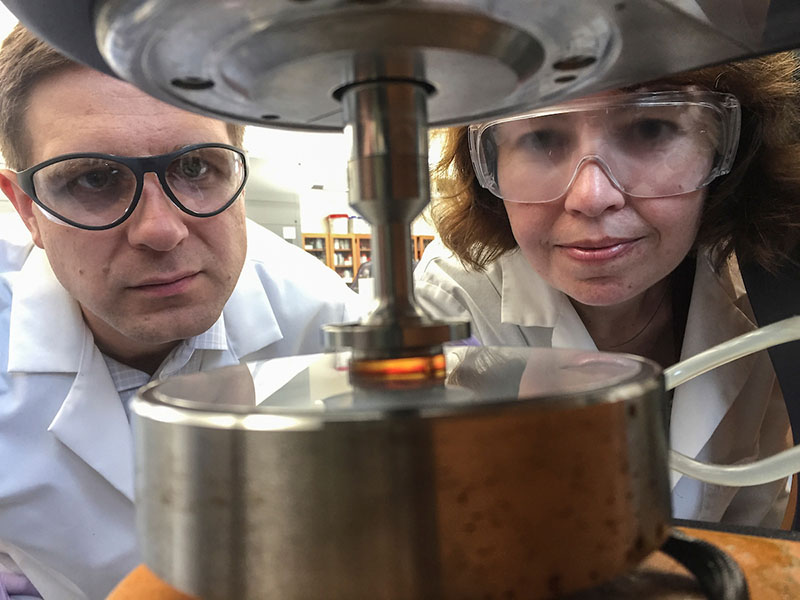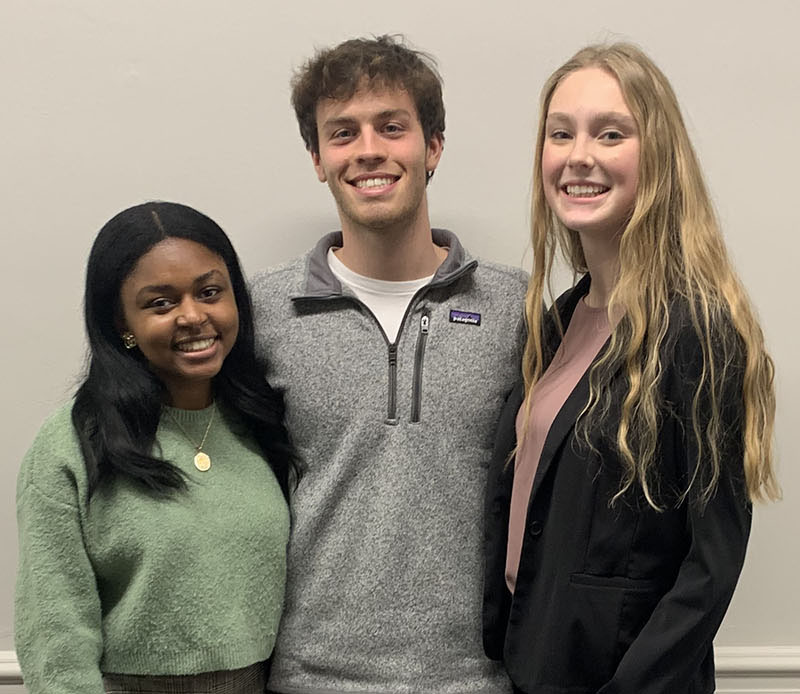Miami scientists to engineer a human-like spine to aid in teaching surgical techniques

Miami scientists to engineer a human-like spine to aid in teaching surgical techniques
A team of scientists at Miami University is developing an engineered spine that mimics human tissue and muscle to aid in teaching surgical residents surgical techniques.
The team, led by Jessica Sparks and Dominik Konkolewicz, received a $30,240 award from Wake Forest University Health Sciences for their project, “Medical Simulator for Teaching Spine Surgery Skills.”
The engineered spine, which is in the beginning stages of research and development, will eventually become a synthetic anatomical model of the lower back, with realistic biomechanical properties. It will provide surgical residents with a cost-effective, reusable resource for real-world practice in a low-risk setting.
“We want to introduce chemical groups that can allow the anatomical model to be reused several times, facilitating both waste reduction and also potentially lowering overall costs,” Sparks said.
Sparks is an associate dean in the College of Engineering and Computing and a professor in the Department of Chemical, Paper, and Biomedical Engineering. Konkolewicz is an associate professor in the Department of Chemistry and Biochemistry and director of its graduate program.
"We are looking forward to using our skills in polymer and soft matter chemistry to develop materials which mimic biological tissue,” Konkolewicz said. “One aspect that we are particularly excited about is not only matching the properties of the biological tissues but also adding unique bonds to the material so that they can be reused."
 Sparks and Konkolewicz are working with a team of six undergraduate students at Miami who will ultimately help design the device and choose the kind of materials to create its features.
Sparks and Konkolewicz are working with a team of six undergraduate students at Miami who will ultimately help design the device and choose the kind of materials to create its features.
“Our undergraduate students will run mechanical tests on various polymers to determine whether they are suitable for mimicking different soft tissues of the lumbar spine region to include in the simulator,” Sparks said.
 Miami’s research team will work with medical professionals from Wake Forest in gathering feedback as the project progresses.
Miami’s research team will work with medical professionals from Wake Forest in gathering feedback as the project progresses.
“It’s inspiring to work with surgeons and clinicians because they provide such valuable insight into the design requirements for an advanced learning aid such as the one we are developing for this project,” Sparks said.
Student team members on this project are:
- Haley Sieg, a junior with a double major in Biomedical Engineering and Theater and a co-major in Premedical Studies;
- Brianne Pirkins, a senior with a major in Biomedical Engineering;
- Sara Koeth, a senior with a major in Biomedical Engineering;
- Caroline Daggett, a junior with a double major in Biomedical Engineering and Premedical Studies;
- Shelby Bass, a sophomore with a major in Biomedical Engineering; and
- Tim Archibald, a first-year with a major in Biomedical Engineering and co-major in Premedical Studies.
"Being a part of this research project has been a learning experience well beyond the classroom, and its extremely rewarding to know that our work is contributing to the education of other students as well," Pirkins said.